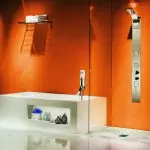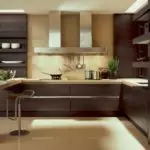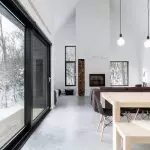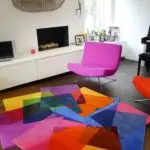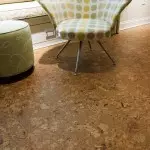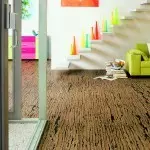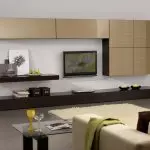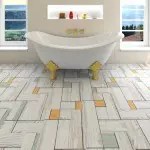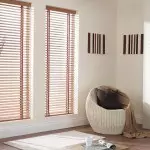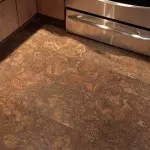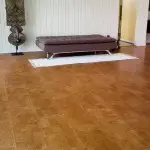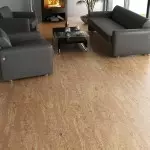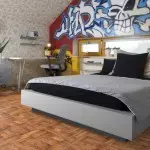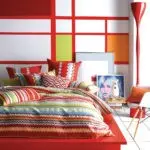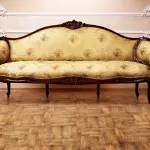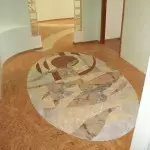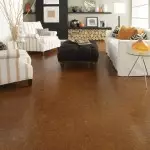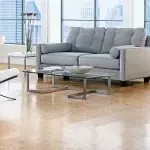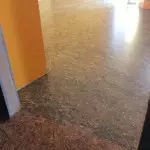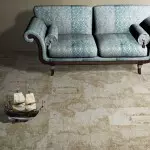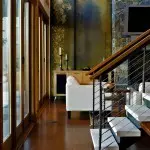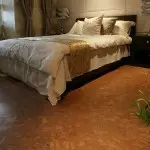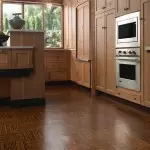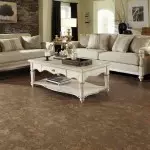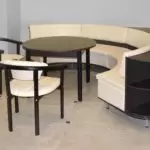More recently, the cork floor in the interior referred to the category of something exotic and unusual. But the increased demand for all natural and environmentally friendly contributed to the rapid population of this material. Materials from traffic jams have a lot of advantages.
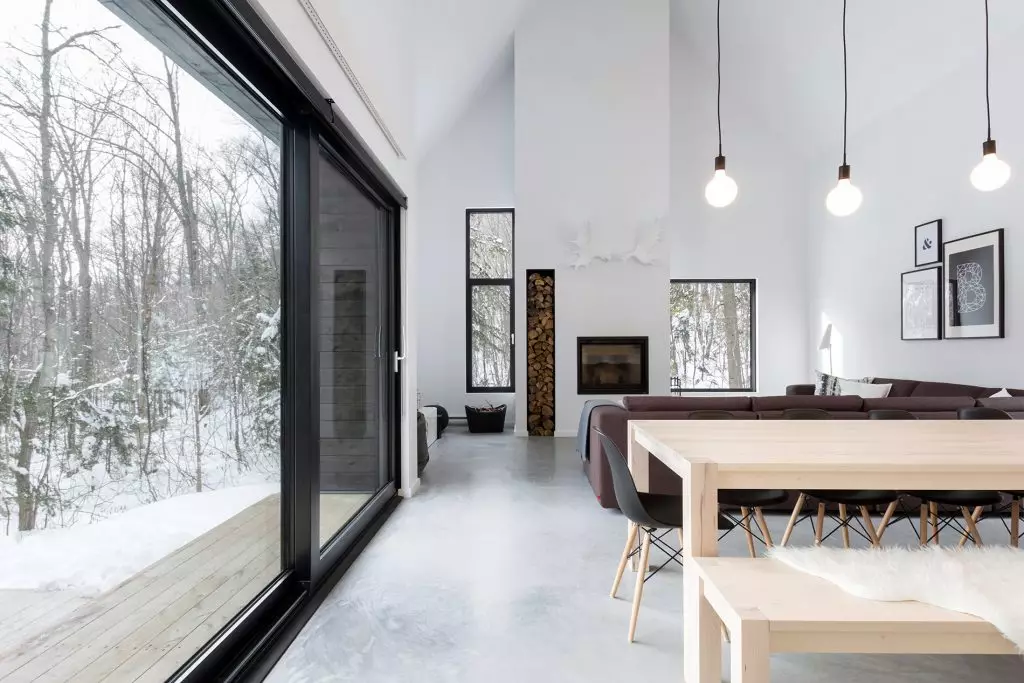
Cork bark consists of tightly adjacent fine hermetic chambers in the form of a 14-graded. The cubic centimeter of the material has more than 40 million chambers filled with inert gas, a mixture of nitrogen and oxygen. In other words, this material on half consists of air. But this is not important. Thanks to air chambers, the material surface has depreciation properties of natural nature. With a pressure pressure, cork material is able to restore its shape.
The main components of the cork material are:
- Subverin is a complex substrate from fats, organic alcohols and acids. It is 45% of all elements. Makes the material plastic and dense, does not allow penetration into the material of substances of liquid or gaseous type.
- Lingin is a complex polymer connection otherwise called vegetable concrete. The second most important, occupies 27% of the traffic jam. Due to it, all elements of cork material are held together, which increases the strength of the material.
- Polysaccharides - retain the texture and structural integrity of the material.
- Tanines - give a saturated color of cork covering.
- Ceremonies - strengthen the strength and waterproof material.
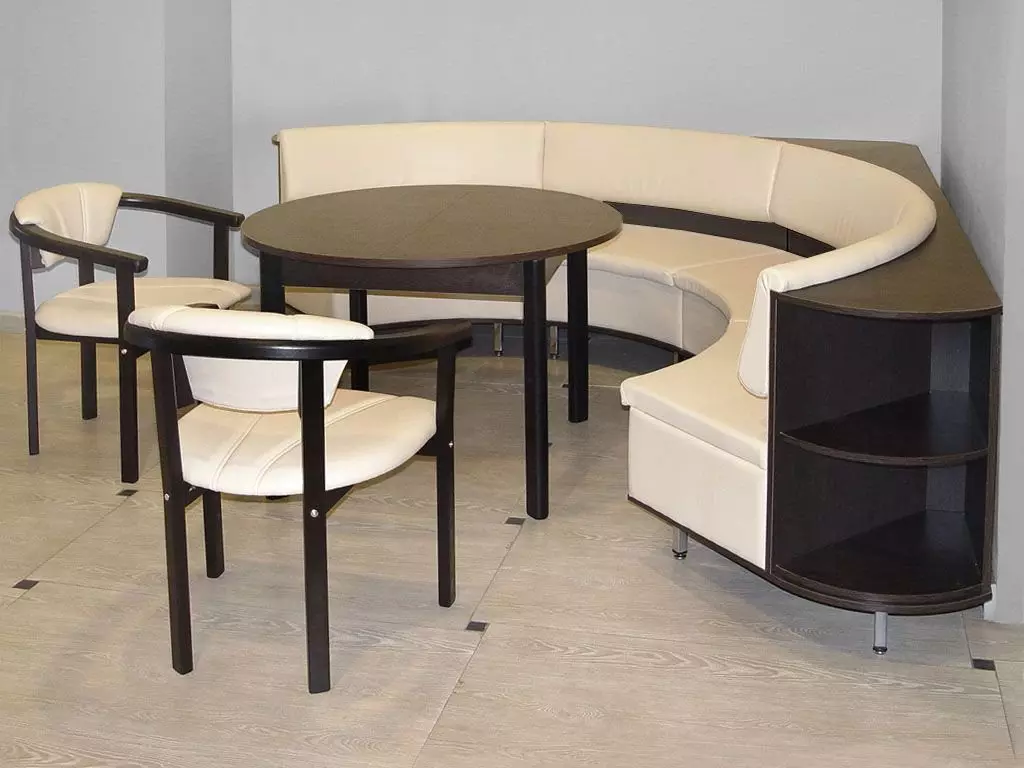
Natural plug has an amazing natural pattern. Such an outdoor coating will complement the interior of the living room and bedroom, regardless of the style and design of the room. For kitchen, cork floors with a special protective coating will replace a more sensitive laminate or linoleum. And in the bathroom, the cork tile will become an excellent help of cold floor ceramics.
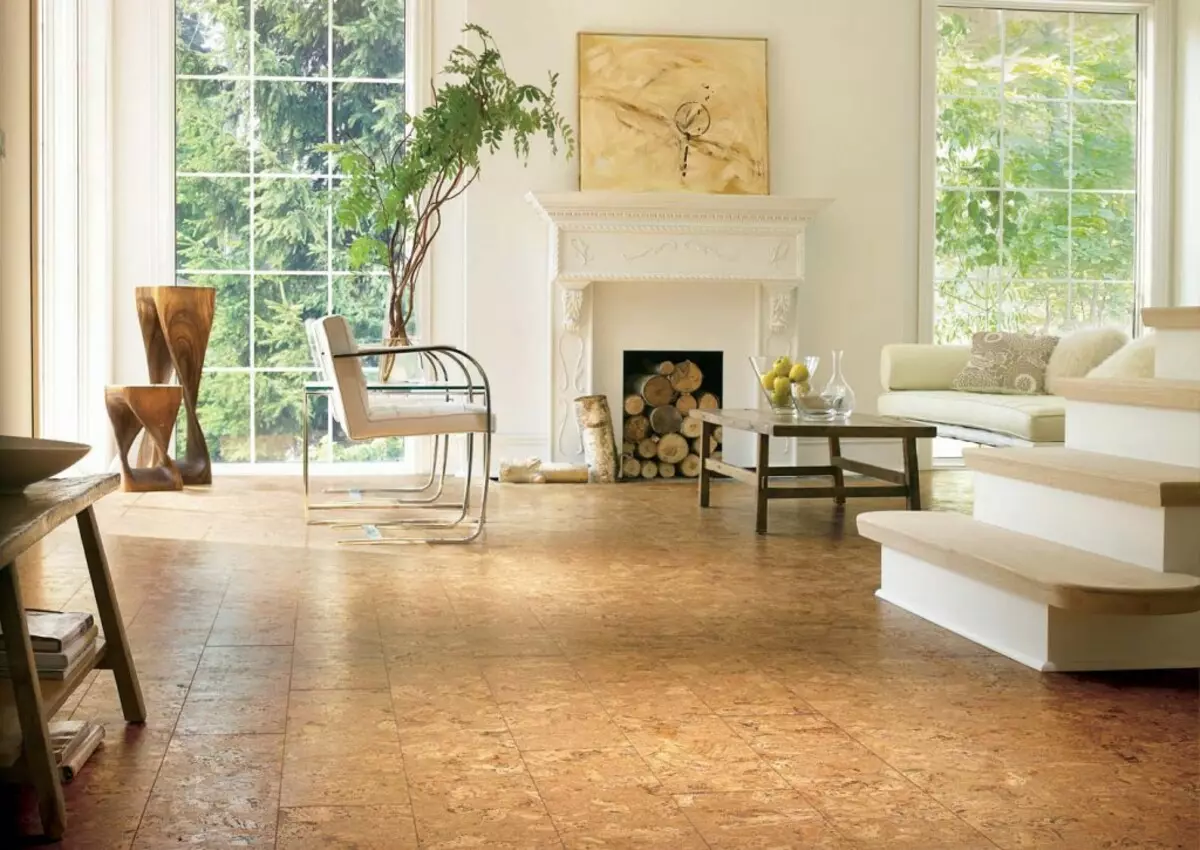
Features of cork coating
Some characteristic features of the coating are superior to more expensive materials that are used to cover the floor:
- Thermal conductivity. The plug has natural thermal insulation properties. When laying, such an outdoor coating does not need a "warm floor" system due to the fact that the material itself very slowly absorbs the external heat. When you go through the room, the floor which is covered with a tile, you feel cold, as the coating quickly absorbs your heat. And the thermal conductivity at the traffic jam is very low and when contacting it you will feel warm.
- Soundproofing. Due to the cellular structure, the absorption coefficient of sounds of this material reaches 85%. This is the perfect option for those who love silence. No hiking, loud sounds from fallen objects, keys, little things. Such floors are a great option for the house where family lives with young children.
- Antistatics and hypoallergenicity. Static electricity does not accumulate on the plug surface, so dust is not attracted to such an outdoor coating. In addition, the structure of cork material is such that it does not allow forging various fungi and mold, as well as accumulating various odors.
Article on the topic: How to choose plaster for alignment of walls and ceiling
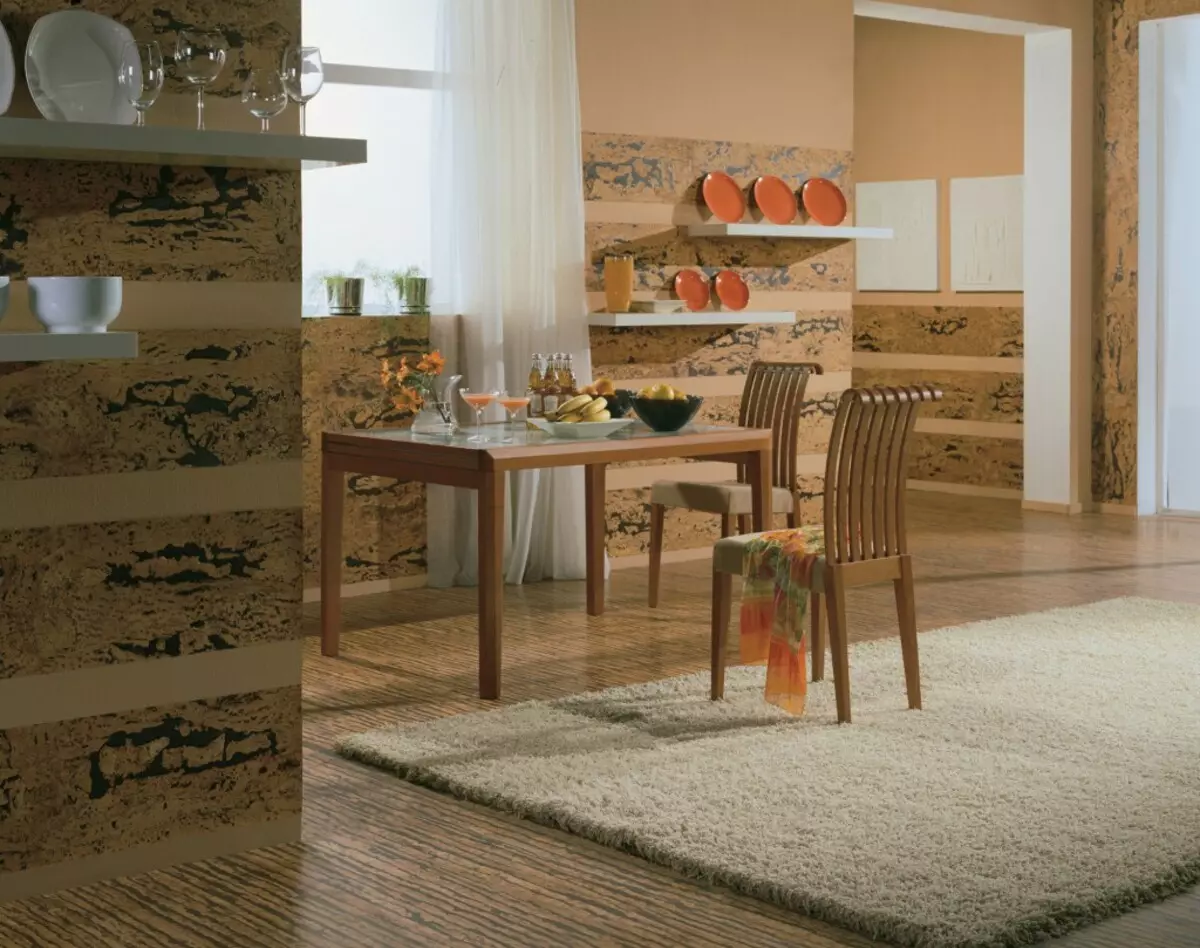
As for negative qualities, the greatest minus is the high price of the material per square meter. To cover the floor in a small kitchen or hallway, you have to lay out a considerable amount. In addition, the material is unstable and other aggressive interventions.
- Use rubberized lining for furniture is categorically not recommended. Traces remain on the surface of the cork floor from rubber, remove which is almost impossible. Use the felt material or the same plug.
- Mechanical instability. Because of its structure, the material is rather soft, therefore it has a weak resistance to deformation in mechanical exposure. The same wheels from the chair or legs of the chairs leave on the surface of the floor dents and scratches. To avoid this, all furniture will have to provide special linings.
- The influence of moisture. The porous surface of the cork absorbs water quite quickly, as a result of which the material is exposed to deformation. For this reason, use such a flooring for a bathroom or kitchen without a protective coating - not recommended.
- Additional protection. Covering without additional processing quite quickly loses its commodity look and wear out. To protect the plug, use special means - varnish or wax to make a floor covering more resistant to various mechanical stress. In addition, due to the continuous exposure to direct sunlight, the coating changes its color, becomes more flexible.
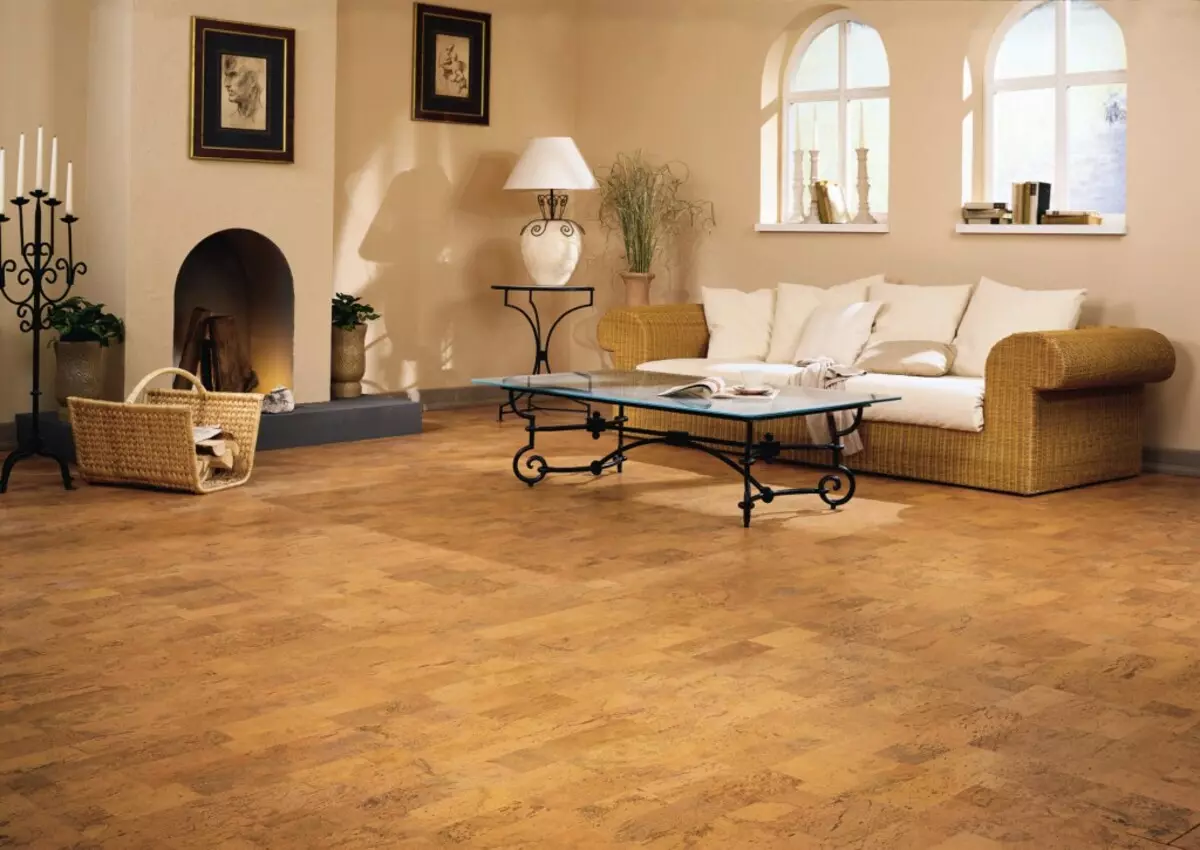
Cork cover options
To lay the cork material on the floor use adhesive, lock tiles or rolled variant. Each option has its own characteristics and disadvantages.
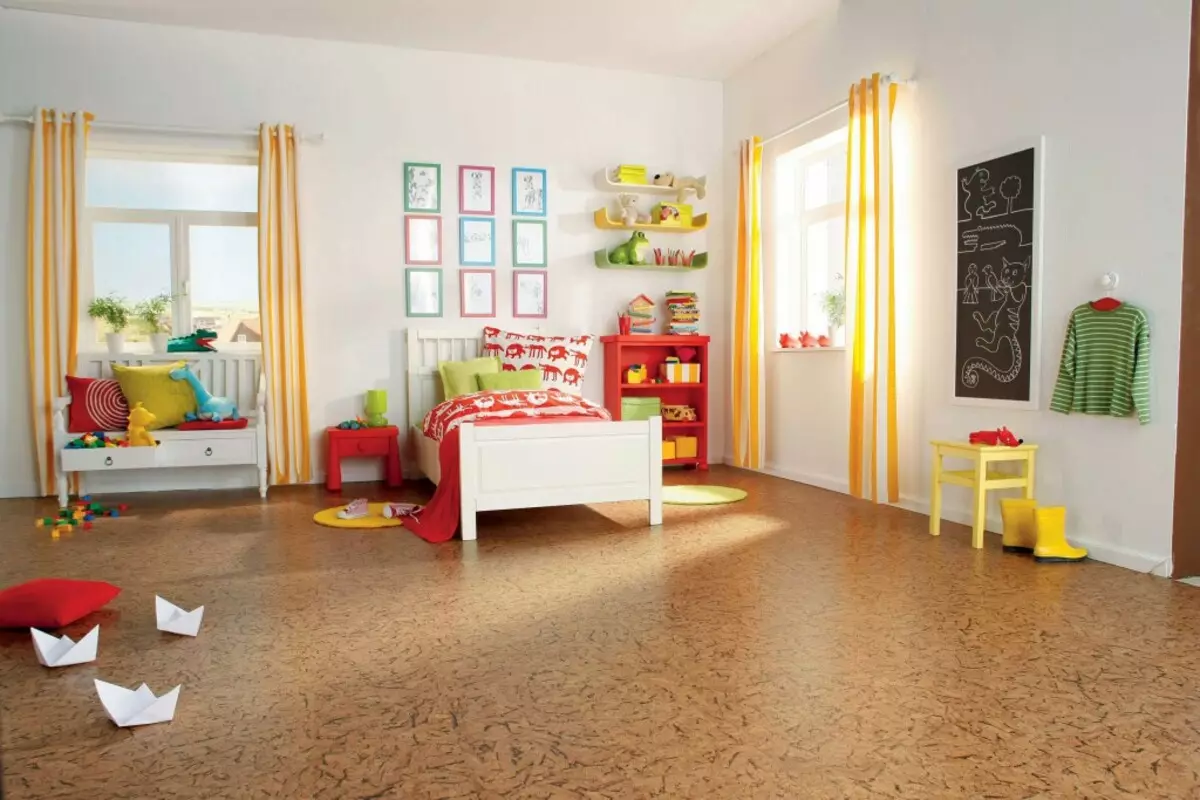
The glue tile reminds its ceramic design. The thickness of such a tile is different - from 3 to 7 mm. The form produces in two versions - in the form of a square or rectangle. Before use, the floor in the room is covered with a special substrate material and the tile from the tube is glued on top of it. For this, special glue is used, so the gaps and gaps between the tiles are not formed. So the coating can be used for artistic masonry and apply in the kitchen, bathroom or other room, where the level of air humidity is increased.
Since the plug is soft materials, before it laying will have to align the floor to hide all flaws and irregularities on the surface.
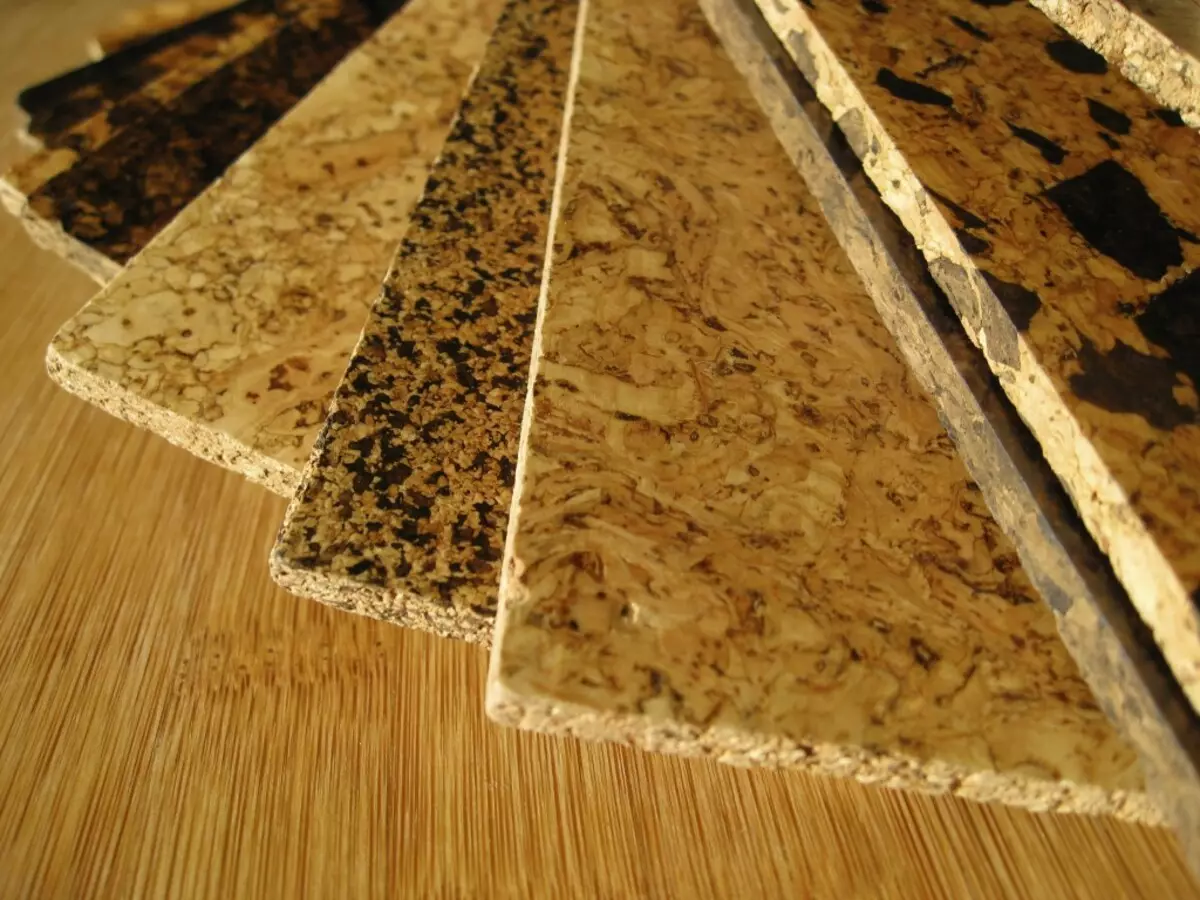
As for the rolled material, it is placed on the same principle as Linoleum. The glue is applied to the smooth surface of the floor and then the roll material is folded. It is necessary to carry out work neatly and efficiently, since the adhesive is instantly grasped and moved or removed without damage it is impossible. The most significant disadvantage of such a coverage is the complexity in working with seams and gaps - to make them invisible or somehow hide enough. Despite such a significant minus and the high cost of the material itself, this coating option is most popular.
Article on the topic: Paul from tiles in the hallway: combination, advantages, disadvantages
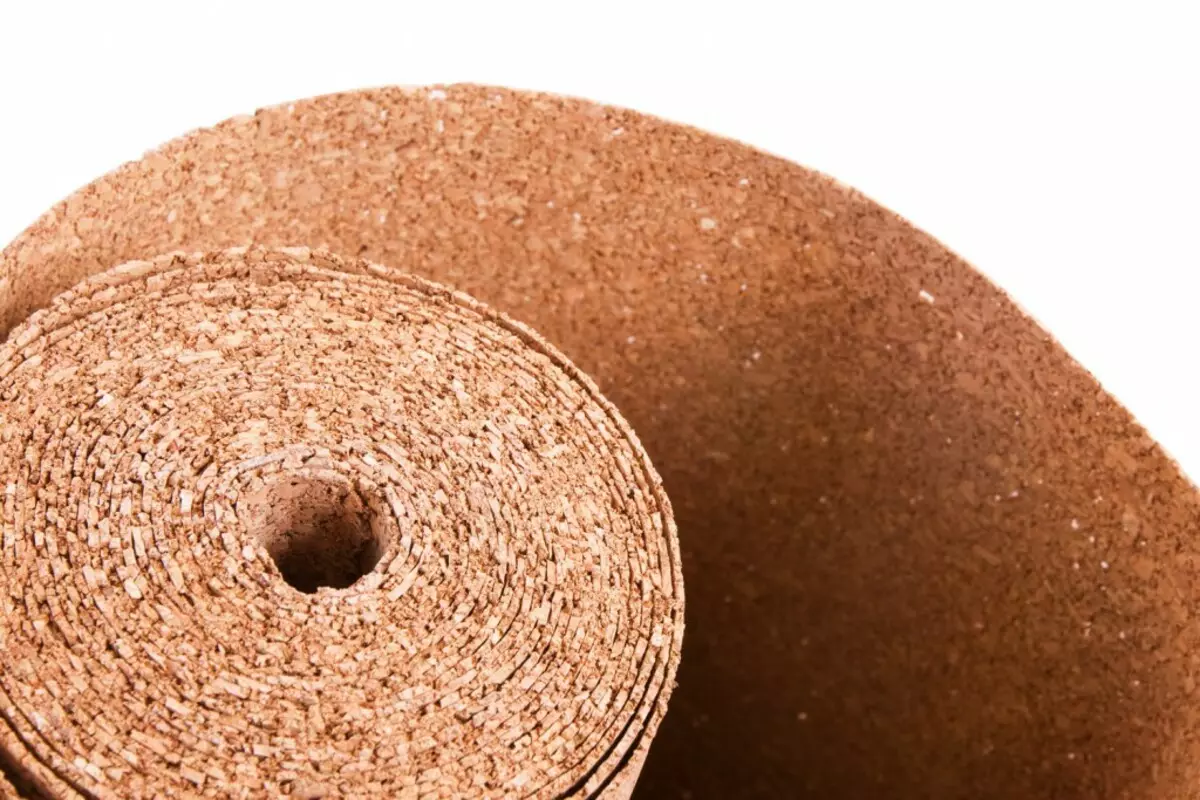
An analogue of the laminate is a lock tile or floating floor. This multilayer coating has a solid bottom layer, an average layer of pressed plug, and a veneer from natural wood is placed on top of it. The floating floor is unnecessary to secure to the floor, it forms a single coating due to the clutch of the plates with each other with a special lock design on the ends. The main advantage of such a coating is the ease of installation. But due to the lack of tightness at the joints and ends, the tiles make such a coating unstable to the influence of moisture. It is recommended to use in the bedroom or living room, but not for the kitchen or bathroom.
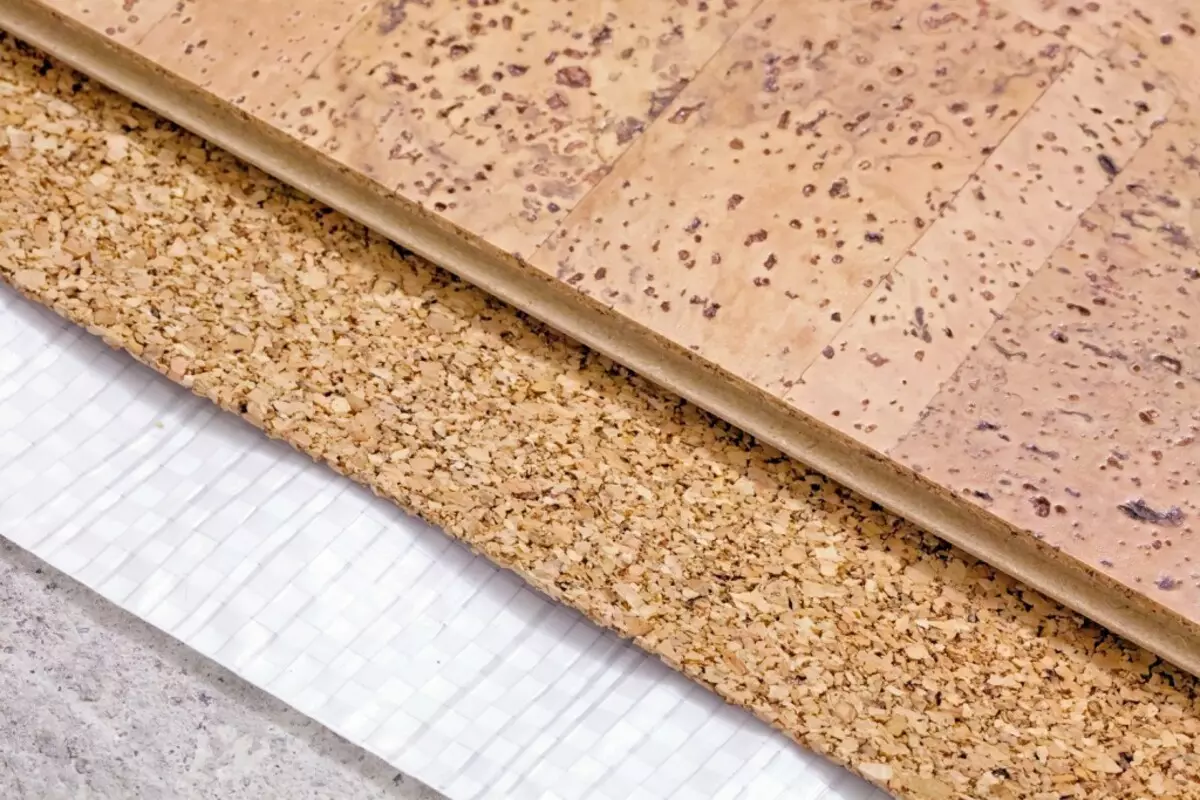
Tips for care
Optimal conditions for the operation of the floor covering from the traffic jam are observing the following modes: air humidity should not exceed 60-65%, and the temperature limits are 20-25 ° C heat. In the winter period, the air in the rooms is dry, so that the cork coating does not breathe, use air humidifiers. For the floor washed from the traffic jam, household chemicals should be used, which does not contain solvents or abrasive particles. Also, it should not be used too wet rag, excess of moisture will apply irreparable damage to the coating and the floor will sweep.
Washing vacuum cleaners are categorically not recommended to use on cork floors. When cleaning, a large amount of water is used in the vacuum cleaner to moisturize the surface.
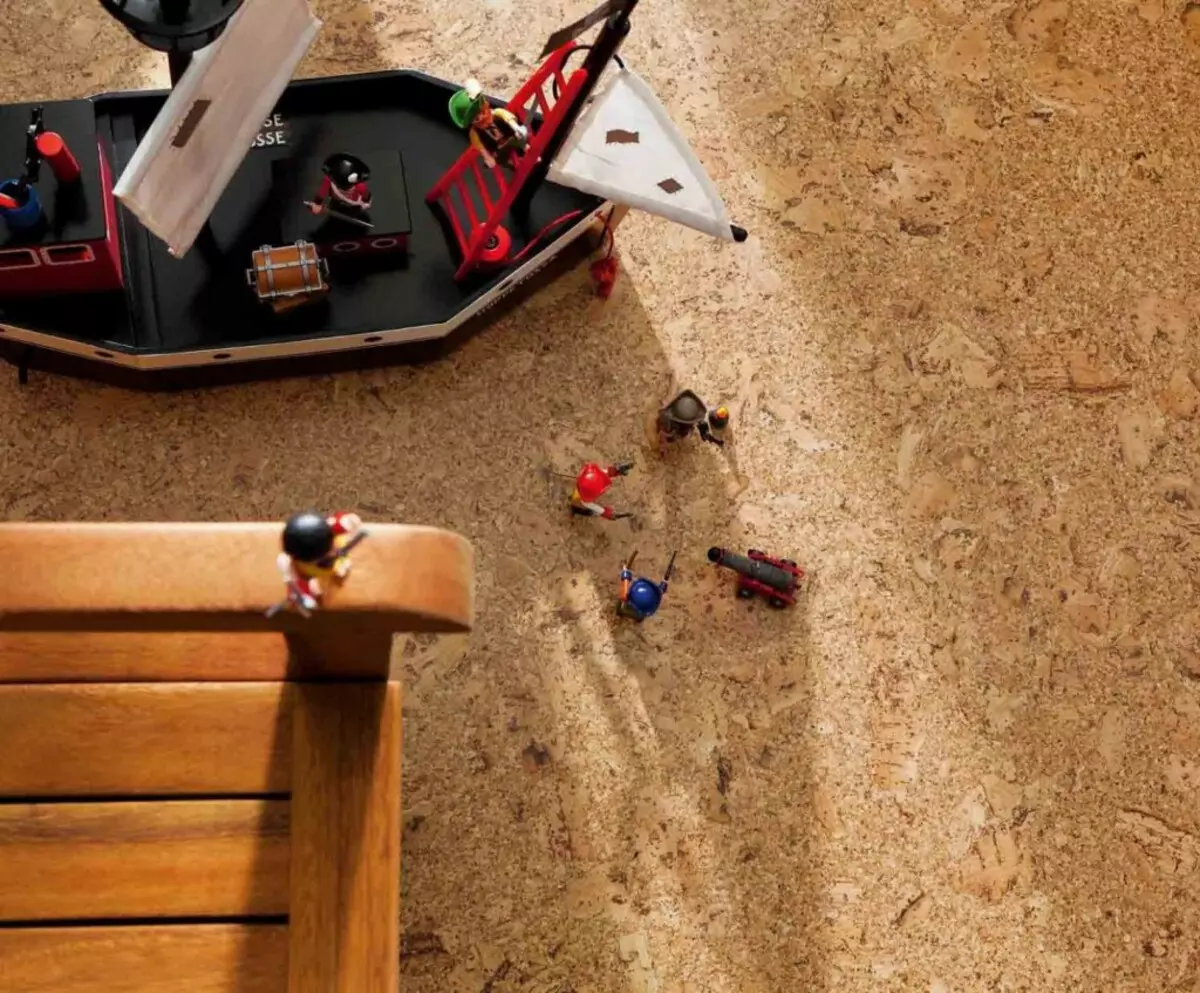
If stains were formed on the floor, it is not possible to remove them in the usual way, they can be lost, using the skin with shallow grain. To hide the resulting defect, cover the loss with varnish or wax.
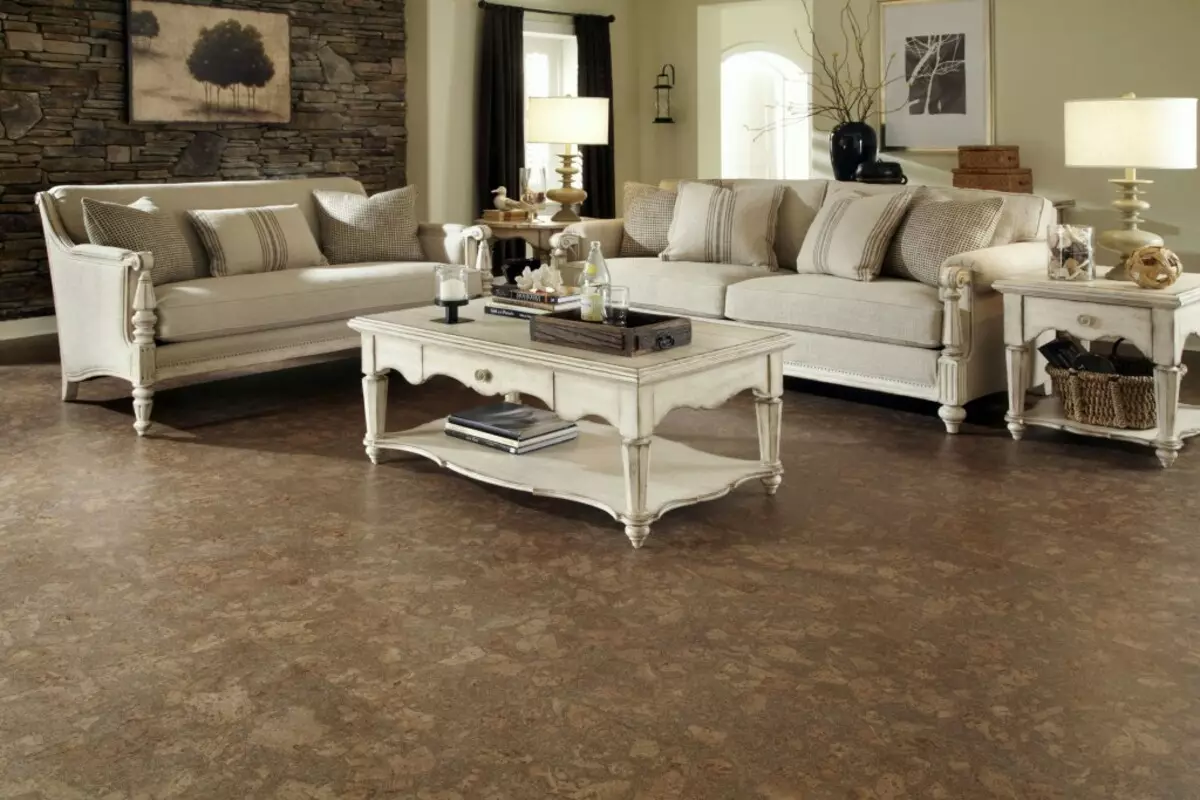
Original interior solutions
To make the interior of the room original, use a few views of the floor covering. Bold combinations of laminate and floating tiles, creating original patterns and contrasts, can be used to zoning a living room or bedroom.
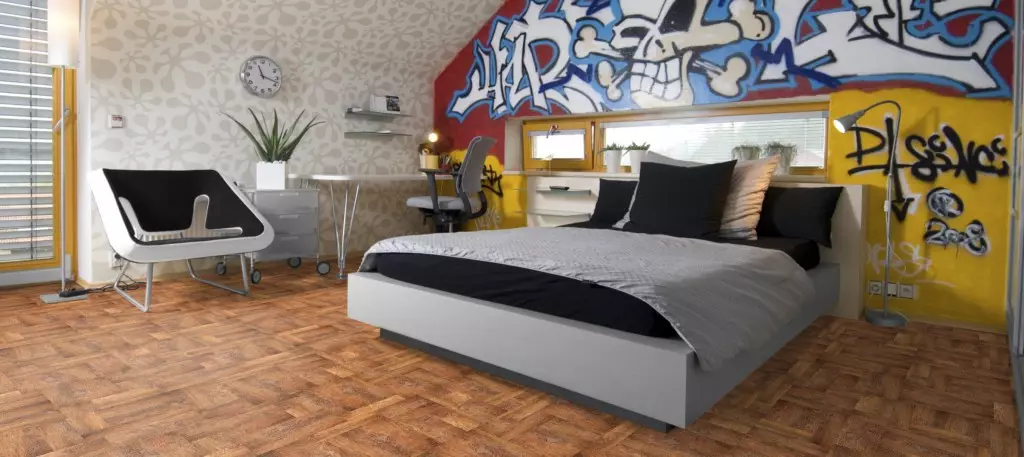
Cork material in nature differs in color and grain size, it can be used to create an outdoor pattern. Dark curly elements of coarse-grained cork and light fine-grained main material will create an amazing contrast. This option can be used for the living room, in the interior of which used furniture made of dark wood and bright decorative elements.
The newest option for the flooring is a cork with a photo printing.
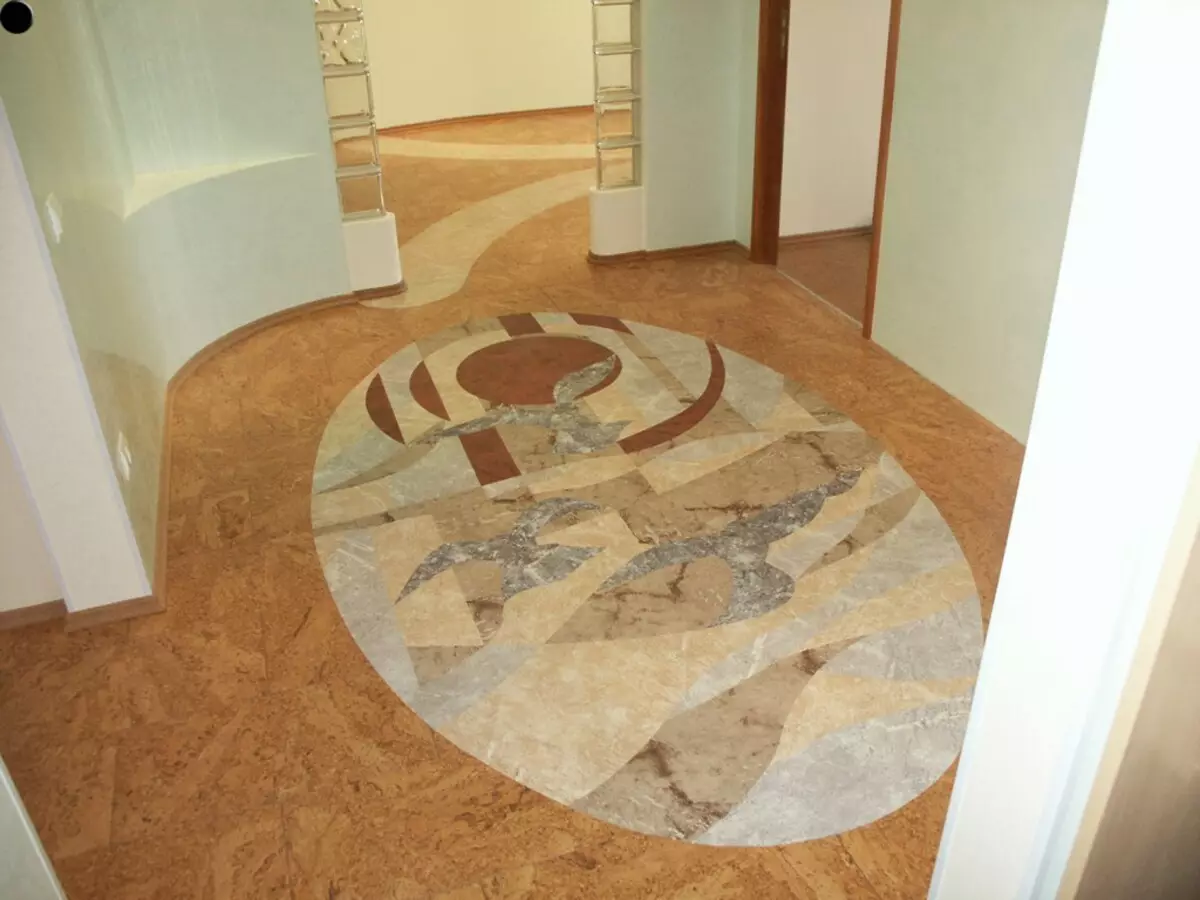
The base of the plug is applied the finest layer with a texture of any natural material - marble, granite, wood and the like. Such a layer on top is covered with three layers of protective varnish. As a result, it turns out a floor covering with enhanced characteristics, more resistant to mechanical damage and moisture influence.
Article on the topic: Carpets in the House for Comfort and Beauty
Video Gallery
Photo Gallery
